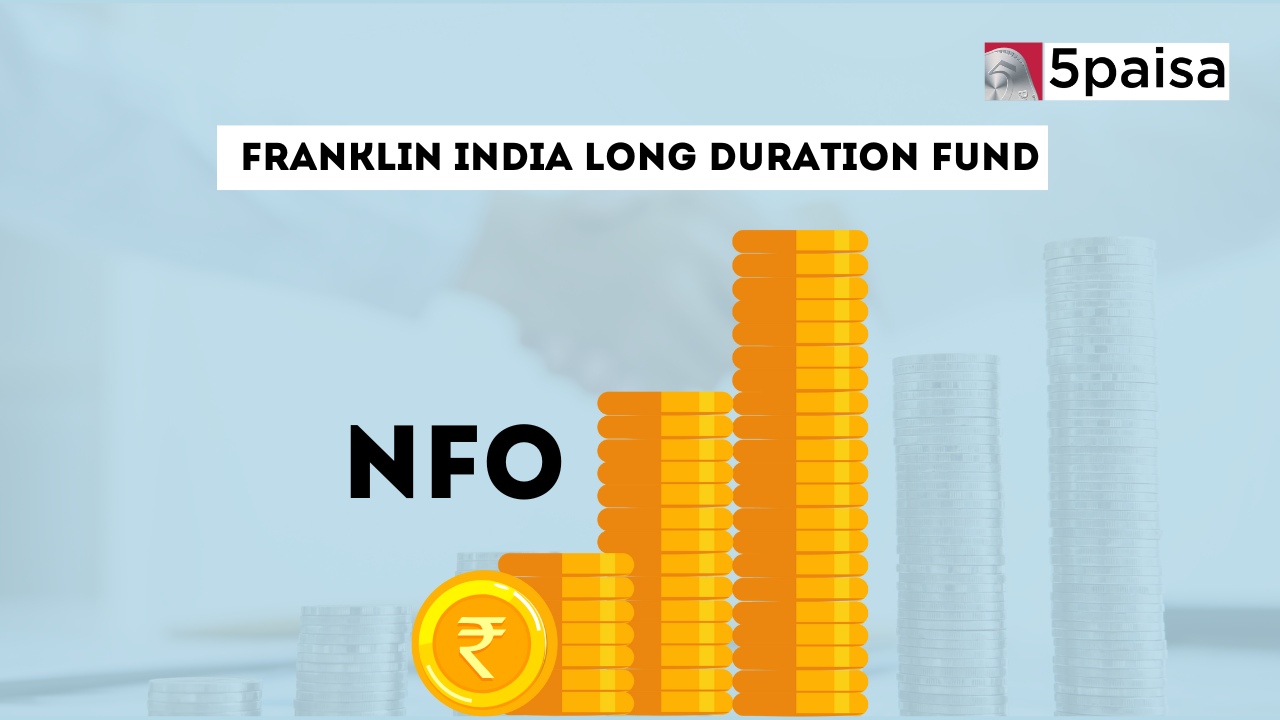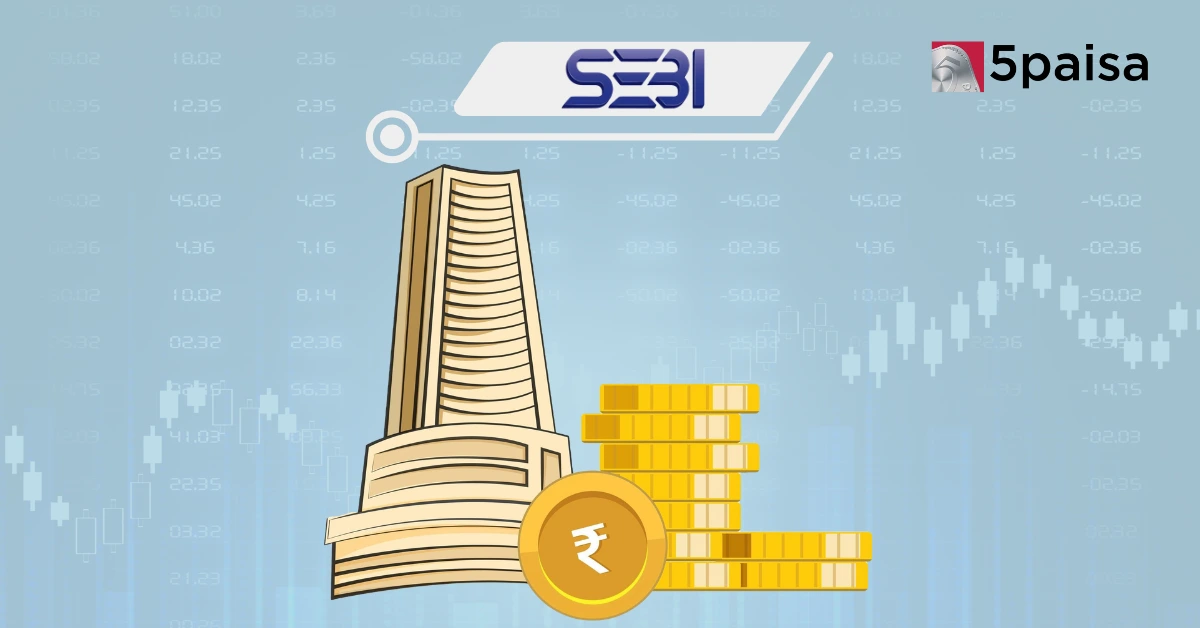SEBI Constitutes High-Level Committee Headed by Pratyush Sinha to Review Conflict of Interest Norms
Franklin India Long Duration Fund Direct(G): NFO Details

The primary objective of the Franklin India Long Duration Fund Direct(G) is to generate consistent returns by strategically investing in debt and money market instruments, ensuring the portfolio's Macaulay duration exceeds 7 years. This approach aims to balance long term growth with risk management. However, it is important to note that achieving the stated investment objective cannot be assured or guaranteed.
Regarding liquidity and listing, the scheme will open for repurchase or redemption on all business days starting from December 13, 2024. Investors can expect redemption proceeds to be dispatched within the regulatory time limit of three working days upon receipt of a redemption request. This timeline is subject to revisions as per updates from SEBI or AMFI. The structure ensures flexibility for investors while adhering to regulatory compliance.
Details of the NFO: Kotak MNC Fund – Direct (G)
| NFO Details | Description |
| Fund Name | Franklin India Long Duration Fund Direct(G) |
| Fund Type | Open Ended |
| Category | Sectoral / Thematic |
| NFO Open Date | Nov 20, 2024 |
| NFO End Date | December 4, 2024 |
| Minimum Investment Amt | ₹5,000 and in multiples of Rs. 1 thereafter |
| Entry Load | Nil |
| Exit Load | Nil |
| Fund Manager | Chandni Gupta & Anuj Tagra |
| Benchmark | CRISIL Long Duration Debt A-III Index |
Investment Objective and Strategy
Objective:
The investment objective of the Franklin India Long Duration Fund Direct(G) is to generate returns by investing in debt and money market instruments such that the Macaulay duration of the scheme portfolio is greater than 7 years. However, there can be no assurance or guarantee that the investment objective of the Scheme would be achieved.
Investment Strategy:
To achieve its investment objective of generating long term capital appreciation with income by investing in debt and money market instruments such that Portfolio Macaulay duration is greater than 7 years. The portfolio will be actively managed to generate income while aiming to achieve an optimal balance between yield, safety and liquidity.
1. Derivative products are leveraged instruments and can provide disproportionate gains as well as disproportionate losses to the investor. Execution of such strategies depends upon the ability of the fund manager to identify such opportunities. Identification and execution of the strategies to be pursued by the fund manager involve uncertainty and decision of fund manager may not always be profitable. No assurance can be given that the fund manager will be able to identify or execute such strategies. The risks associated with the use of derivatives are different from or possibly greater than, the risks associated with investing directly in securities and other traditional investments. The performance of the scheme may be affected by the corporate performance, macroeconomic factors, changes in Government policies, general levels of interest rates and risk associated with trading volumes, liquidity and settlement systems in the securities markets.
2. Low trading volumes, settlement periods and transfer procedures may restrict the liquidity of the Franklin India Long Duration Fund Direct(G) investments. Transacting may become difficult due to extreme volatility in the market resulting in constriction in volumes. Additionally, changes in the SEBI/ RBI regulations/Guidelines may have an adverse impact on the liquidity of the scheme. Different segments of the Indian financial markets have different settlement periods, and such period may be extended significantly by unforeseen circumstances. The length of time for settlement may affect the Scheme in the event the Scheme has to meet an inordinately large number of redemption requests. In addition, the Trustee at its sole discretion reserves the right to limit or withdraw sale and/or repurchase/redemption and/or switching of the units in the scheme (including any one of the Plans of the scheme) temporarily or indefinitely under certain circumstances. For details refer the Section Suspension of sale of units’ and ‘Suspension of redemption of units’. The scheme will retain certain investments in cash or cash equivalent for the day to day liquidity requirements.
3. Interest rate risk: This risk results from changes in demand and supply for money and other macroeconomic factors and creates price changes in the value of debt instruments. Consequently, the Net Asset Value of the scheme may be subject to fluctuation. Changes in the interest rates may affect the Scheme's Net Asset Value as the prices of securities generally increase as interest rates decline and generally decrease as interest rates rise.
Prices of long term securities generally fluctuate more in response to interest rate changes than do shortterm securities. Indian debt markets can be volatile leading to the possibility of price movements up or down in fixed income securities and thereby possible movements in the NAV. This may expose the schemes to possible capital erosion.
4. Credit risk or default risk: This refers to the risk that an issuer of a fixed income security may default (i.e. will be unable to make timely principal and interest payments on the security). Default risk / credit risk arises due to an issuer’s inability to meet obligations on the principal repayment and interest payments. Because of this risk corporate debentures are sold at a yield above those offered on Government Securities, which are sovereign obligations and free of credit risk. Normally the value of a fixed income security will
fluctuate depending upon the changes in the perceived level of credit risk as well as any actual event of default. The greater the credit risk, the greater the yield required for 22 someone to be compensated for the increased risk.
5. Market risk: This risk arises due to price volatility due to such factors as interest sensitivity, market perception or the credit worthiness of the issuer and general market liquidity, change in interest rate expectations and liquidity flows. Market risk is a risk which is inherent to investments in securities. This may expose the schemes to possible capital erosion.
6. Reinvestment risk: This risk refers to the interest rate levels at which cash flows received for the securities in the Scheme are reinvested. Investments in debt instruments are subject to reinvestment risks as interest rates prevailing on interest or maturity due dates may differ from the original coupon of the bond, which might result in the proceeds being invested at a lower rate. The additional risk from reinvestment is the interest on interest component. The risk is that the rate at which interim cash flows can be reinvested may be lower than that originally assumed.
7. Liquidity or Marketability Risk: This refers to the ease with which a security can be sold at or near to its valuation yield to maturity (YTM). The primary measure of liquidity risk is the spread between the bid price and the offer price quoted by a dealer. Liquidity risk today, is a characteristic of the Indian fixed income market. This could lead to higher costs for secondary market trading, if the fund witness’s volatile flows.
Risks Associated with Franklin India Long Duration Fund Direct (G)
1.Interest Rate Risk: As the fund invests in long duration debt instruments, it is highly sensitive to fluctuations in interest rates. If interest rates rise, the prices of the underlying securities typically fall, leading to a potential decrease in the Net Asset Value (NAV) of the fund. The longer the duration of the investment, the more pronounced this effect can be. Hence, the value of the fund’s investments could be significantly affected by changes in macroeconomic factors influencing interest rates.
2.Credit Risk or Default Risk: The risk that issuers of fixed income securities in the fund’s portfolio may fail to meet their interest or principal payments, leading to potential capital loss. This risk can particularly affect nongovernment securities, as they tend to have higher yields to compensate for the risk of default. Any deterioration in the creditworthiness of the issuer may adversely impact the fund’s performance.
3.Liquidity Risk: The risk that the fund may be unable to buy or sell its investments quickly enough to prevent a loss or meet redemption requests. Low trading volumes and extreme market volatility can further limit liquidity, making it difficult to transact at favourable prices. Regulatory changes, such as SEBI or RBI guidelines, can also impact the liquidity of certain instruments, further restricting the fund’s ability to buy or sell assets.
4.Reinvestment Risk: The fund may face reinvestment risk when cash flows, such as interest payments, are reinvested at rates lower than the original investment’s yield. This can occur during periods of falling interest rates, diminishing the overall returns of the fund. The interest on interest component of reinvestment risk can also reduce the expected income from the investment.
5. Market Risk: This refers to the overall risk of price fluctuations in the securities market, influenced by factors like interest rates, investor sentiment, macroeconomic conditions, and government policies. The value of debt instruments in the fund could be affected by adverse changes in these factors, potentially leading to capital loss.
6. Derivative Risk: The fund may use derivative instruments, which carry the risk of disproportionately high losses. The performance of these instruments depends on the fund manager’s ability to identify profitable opportunities. Mismanagement or unsuccessful execution of strategies may lead to significant financial losses for the fund.
Who Should Invest in Franklin India Long Duration Fund Direct (G)
Franklin India Long Duration Fund Direct(G) is suited for investors with a long-term investment horizon who are looking for consistent returns from debt and money market instruments. This fund is ideal for investors who are risk tolerant and can withstand fluctuations in interest rates, as it primarily focuses on long duration debt securities, which are highly sensitive to interest rate changes.
It is also suitable for investors looking for exposure to debt markets and those interested in generating income through the coupon payments of long-term debt instruments. However, due to its higher duration and exposure to market volatility, investors should have a moderate to high risk appetite.
Investors who require liquidity or expect short-term financial goals should avoid such funds, as they might face volatility in the short run. Additionally, those with low risk tolerance or concerns about fluctuations in interest rates and credit defaults should reconsider investing in this type of fund.
Moreover, investors seeking diversification in their debt portfolio with a long-term view can benefit from this fund, but they must be aware of the associated risks and consider it as part of a diversified investment strategy.
- Flat ₹20 Brokerage
- Next-gen Trading
- Advance Charting
- Actionable Ideas
Trending on 5paisa
03
 5paisa Research Team
5paisa Research Team
Indian Market Related Articles
Disclaimer: Investment in securities market are subject to market risks, read all the related documents carefully before investing. For detailed disclaimer please Click here.





